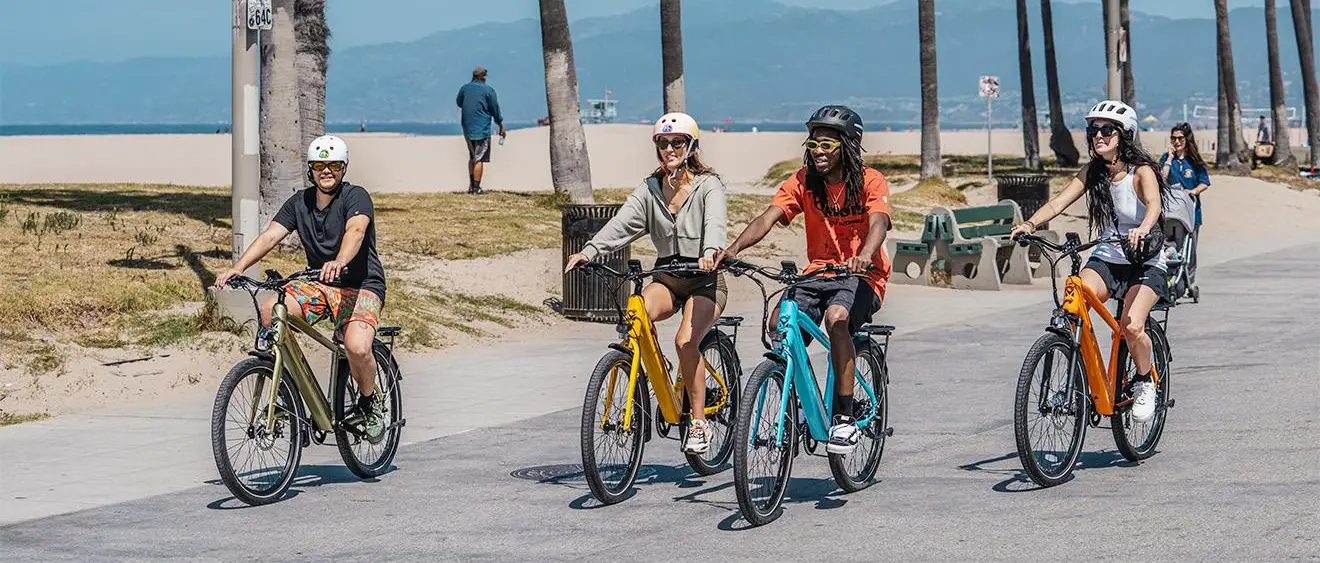Last Updated on November 22, 2022 by Igor Karni
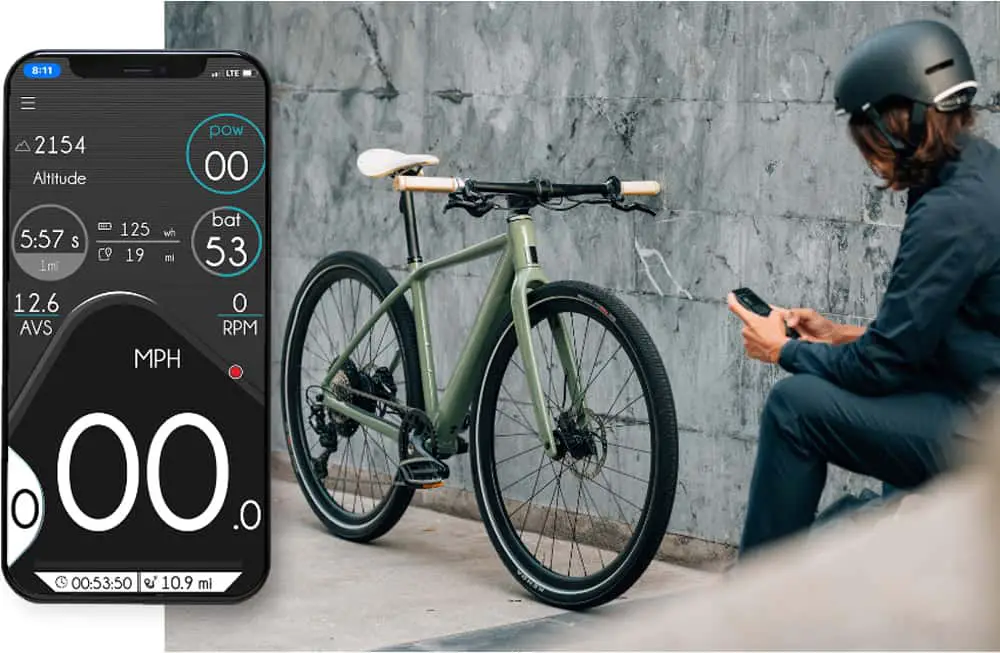
The bicycle – electrically assisted or not – is an excellent field for innovation. That is an opportunity to take stock of the most unique and surprising technologies.
We have already discussed this: the ideal electrically assisted bicycle does not exist. At least yet to be in the form that would bring together in a single machine all the technologies and functionalities that can be found scattered on several devices available on the market.
Read also: How to choose an electric bike? 10 criteria to consider before buying. And, What is the ideal e-bike? Must have features on any electric bike.
However, electric urban mobility remains a formidable field for innovation in terms of comfort, safety, and efficiency in travel management and, therefore, energy. And therefore respect for the environment thanks to a specific form of sobriety.
As consumers increasingly demand more environmentally friendly means of transport, manufacturers have developed innovative electric machines that can be adapted to various conditions, whether using their bikes to get to work on time or exploring rural areas on leisure trips.

On the urban side, e-bikes are extremely popular among commuters, as they are a fast, convenient, and greener alternative to cars. As a result, electric bicycle manufacturers have turned to new technologies to adapt their products to the urban environment.
But beyond urban commuters, many e-bike innovations are also aimed at those who prefer to venture off the beaten track. Here is a detailed review of the latest innovations in the fast-moving world of electric bikes.
Read also: Is riding an e-bike eco-friendly? And, Buying a second-hand electric bike, pitfalls to avoid.
In the past, all electronic devices installed on bicycles, except for dynamo lights, had to be powered by their energy source, which was a design compromise. Now, these devices, which typically have very modest power consumption, can draw their power from the bike’s built-in battery, effectively expanding the scope for innovation.
Anti-lock braking system (ABS)
Most e-bike accidents occur during braking, and about 40% are due to front wheel locking. When the front wheel locks, the rider skids, tips over, or worse, goes head-first over the handlebars.
The Italian company BluBrake, for example, has developed a braking solution to make e-bikes safer, offering cyclists safety technology similar to that used in cars and motorbikes. A sensor on the front wheel measures the bike’s speed and transmits this information to the central ABS unit, which is the system’s brain.
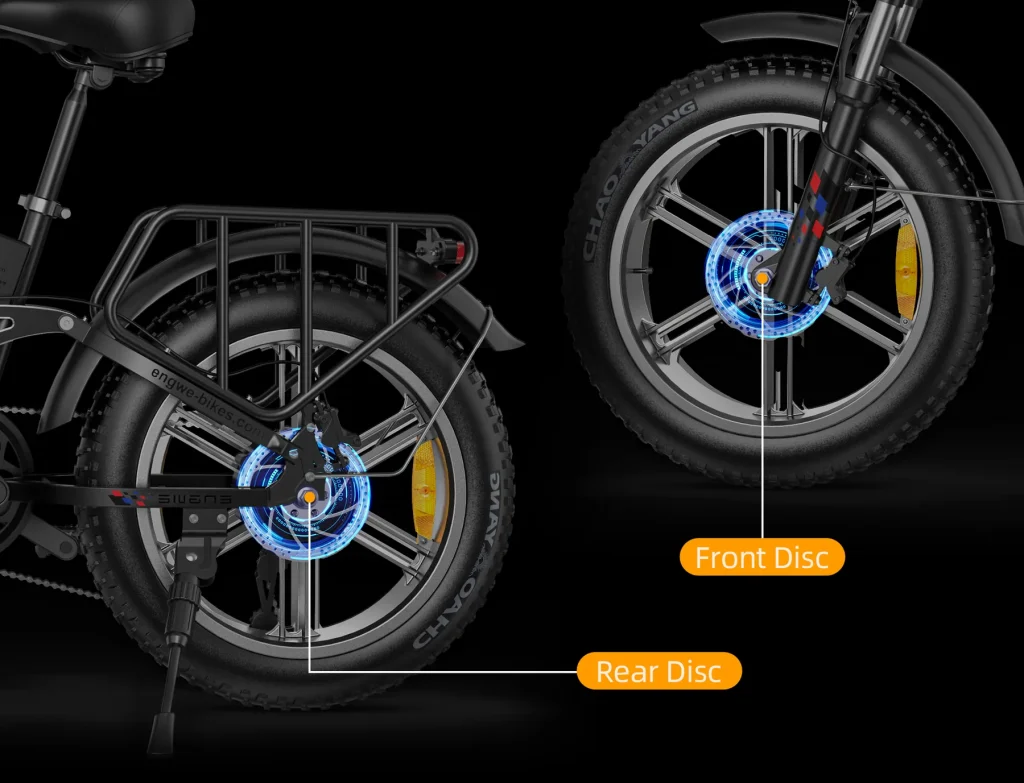
A display on the handlebars informs the rider of the system’s status, while electronics are used to monitor speed and predict potential hazards. If a dangerous situation arises, an actuator regulates the pressure on the front brake to prevent the rear wheel from lifting off the ground.
Read also: Are electric bikes dangerous? What are e-bike risks? And, How safe are electric bikes?
Blubrake collaborates with accessory brands but is not alone in the market. Bosch, Shimano, and SABS offer anti-lock systems focusing on pad brakes.
The derailleur without derailleur
Many bicycle manufacturers (electric or not) have been working for a long time on the question of gear shifting and reduction for a long time.
Some, like VanMoof, have solved the problem with an ‘intelligent’ assistance system that adapts the strength of the assistance to the terrain, accompanied by an electronic gearing system with only 4 ratios. It needs to be more convincing on very steep slopes.
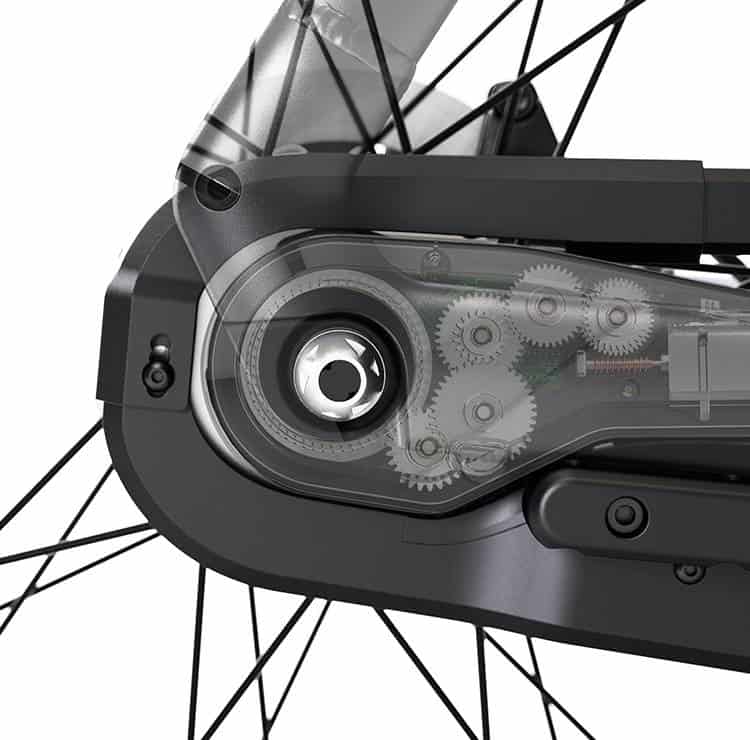
Others, such as Bosch or the French company 02Feel, are working on “automatic gearbox” systems with several gears, similar to what is used in cars.
The Belgian company Classified Cycling has just developed a system of gears in the derailleur that some do not hesitate to call revolutionary. The Powershift Hub is a wireless shifting technology that allows instantaneous shifting under full load.
Read also: How to use gears on an electric bike (mechanic and electric)? And, How to switch electric assistance levels on an e-bike?
Its first application is the Powershift Hub, which replaces the derailleur. According to its creators, the Powershift Hub offers unparalleled shifting quality, a high gear range, and small steps between gears, combining the advantages of 1x and 2x. The Powershift Hub is also available as a kit to be mounted on any bike.
Intelligent suspensions
Like some cars with controlled damping, bicycles can now rely on intelligent suspension systems. That is the case of Brain, proposed by Specialized. This mechanical system considers numerous parameters, or MIND, by Mondraker, developing a much more sophisticated device based on sensors and data collection via an application to automatically propose the best suspension configuration according to the context.
Initially reserved for competition mountain bikes, such devices could also find their place on urban bikes and even more so on mountain bikes, adapting the damping to the configuration of the terrain and the pedaling force.
Read also: How to select your first electric mountain bike? And, How much does a good eMTB e-bike cost?
The dashboard that says it all
In the age of data, GPS, and fitness, knowing everything about your cycling trips is now a must. Most recent bikes are equipped with a small screen displaying the essentials in what is still known as a trip computer.
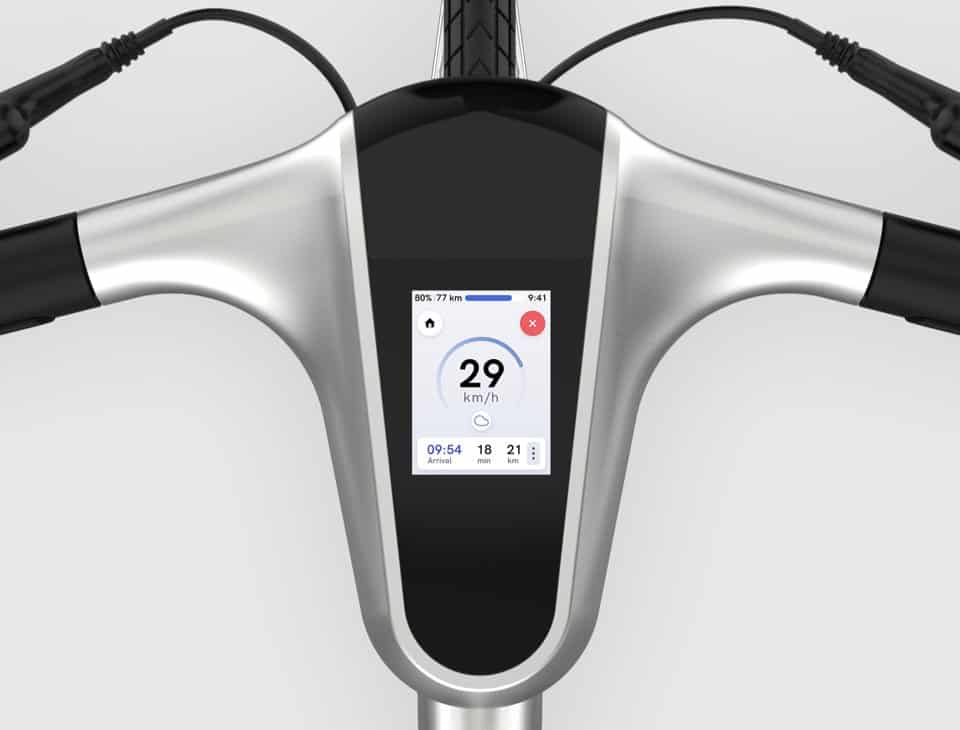
But some are doing much better, offering a wealth of data about your journeys, all in a much improved and more user-friendly graphical interface, not to mention the size of the screen and its display technology.
That is the case, for example, with Hammerhead’s Karoo 2 or the latest version of the Bosch Kiox. In the same spirit, the Garmin Edge range does the job. Otherwise, some bikes have integrated dashboards running on an in-house operating system. That is also the case with Angell, among others, and it is pretty successful.
Read also: Cowboy 3 vs Vanmoof S3 review, top connected city e-bikes. And, Angell vs Cowboy vs Vanmoof, which one would you choose?
Safety sensors and cameras
Safety on a bicycle also means being alerted in time to dangers in the surroundings. Many companies are working on this exciting and sensitive subject. For example, Garmin is again working on this with its Varia radar, which shows traffic coming from behind in real-time on the Edge display.
Or Streetlogic, a start-up company that has developed a dashcam for bicycles that detects surrounding hazards. Like the system used in Tesla cars, this device uses cameras to scan the environment.
A central brain based on artificial intelligence interprets and compiles the data, which is then displayed on a smartphone screen. Then, when the wide-angle cameras detect a hazard, the system immediately sends an audible and visual alert to the rider to warn them.
Read also: Can e-bikes help climb steep hills? And, How safe are electric bikes?
That is mainly the case when a car is approaching from behind, in blind spots, or even when a vehicle is moving to the side or in front.
The camera mirror
A geeky gadget? Not sure. As we all know, when cycling, seeing your surroundings in the best way guarantees improved safety. And seeing behind you should be a matter of course, not only when you want to change lanes or make a U-turn, but also to see the traffic behind you and to be able to anticipate a danger.

As mentioned, it is surprising that the mirror is not a compulsory safety feature on bicycles, especially on e-bikes. That is a terrible signal to cyclists, saying that what is happening behind them is not essential in terms of safety (for them and others).
So, of course, you can put a good old mirror (or two) on your handlebars, and that’s it. But it takes up space and increases the bike’s width; it’s relatively fragile and can be stolen or vandalized.
That is where the new solutions of installing a tiny camera under the saddle, or even integrated into the rear light, connected to a small removable screen fixed to the handlebars, can make sense. It is easy to install, inexpensive (about 70 $/€), does not increase the width of the bike, and offers a better view of the rear.
Read also: Are electric bikes good for the environment? And, Are electric bikes safe?
The icing on the cake is that some cameras can record what they see, which is very useful in the event of a dispute (dashcam function). Others do not require a dedicated screen as they are connected to the smartphone via WiFi.
Unfortunately, we don’t have any particular brands to recommend as they are often products from China sold via e-commerce platforms such as Amazon. Still, a little research will help you find what you are looking for.
The airbag and the inflatable helmet
Innovation in two-wheeled vehicles also involves improving safety as a priority. Following the example of what is already being done with motorbikes, equipment manufacturers in the world of cycling are also beginning to offer inflatable passive safety systems designed to absorb shocks in the event of a fall by enveloping vital parts with airbags.

That is the case of EVOC with its COMMUTE AIR PRO 18, an airbag protecting the neck, shoulders, and chest. This equipment should be available in 2023 (but not cheap, around 800 € per parachute, plus 40 € per cartridge used).
In the same spirit, for those who are allergic to helmets, the Swedish company Hövding has been offering its inflatable helmet for several years now, which deploys in 0.1 seconds. According to its creators, the Hövding helmet is the safest in the world, protecting up to 8 times better than traditional bicycle helmets.
In conclusion
Comfort and safety are all the more severe issues regarding electric bicycles, as many users are starting or returning to cycling since the emergence of the electric bike. These are relatively heavy and powerful machines that require a certain amount of control, which technology can accompany (without replacing).
This equipment, which is sometimes still costly, would nevertheless benefit from becoming more widespread for the good of all.
Igor is a sustainable mobility and green energy advocate. His mission for Easy E-biking is to help make electric cycling simple, practical, and fun. Follow him on Facebook and LinkedIn.

